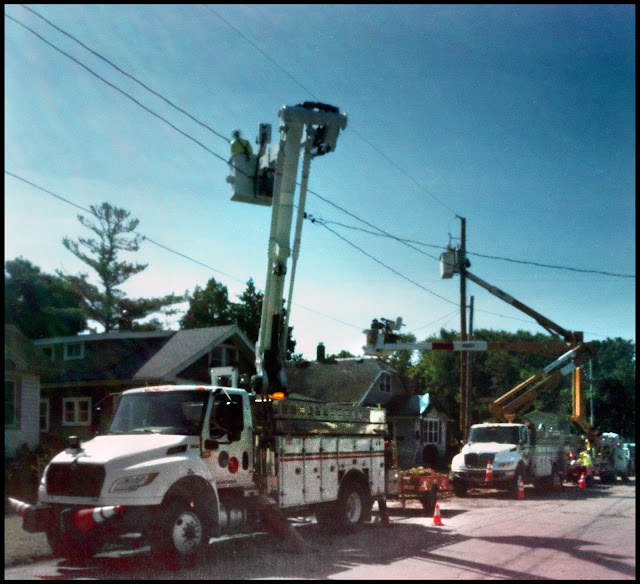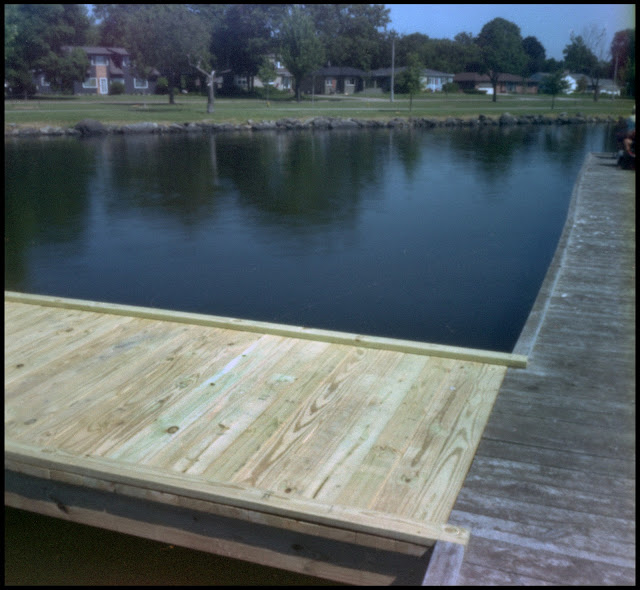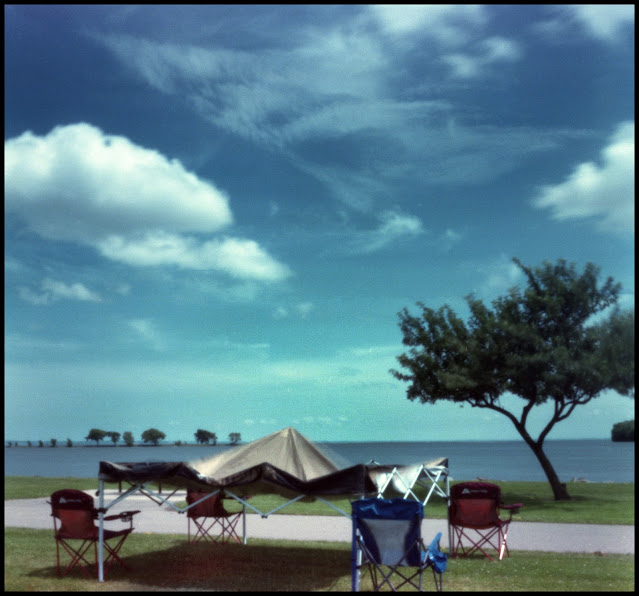I recently corresponded with someone to whom I had given several cameras. One comment I found distressing was that they didn't use them because they were "afraid to wear and tear them because they are so lovely." My cameras are made from packaging materials, and the ones in question were beer cases, which were protected with spray acrylic. Think of what that goes through in your shopping cart. It's pretty tough. I'll admit to occasionally needing a little maintenance, but that is usually a drop or two of glue. They're also pretty invulnerable to falls. My tripod goes over at least once with every roll of film. The EyePA 30 has exposed 10 rolls of film and is currently in an art exhibit.
Then I thought, "Do I do that? Do I avoid cameras because I'm afraid they'll get blemished?"
The Little Black Cube immediately came to mind. It's made out of about the lightest material I've ever used, although wonderfully opaque and maybe a little extravagantly thick for its original purpose as an envelope. Because it has the same internal film holder as any of my Compact Series, it doesn't feel crushable, and doesn't seem any more delicate than any of my other cameras when you're holding it. It's one unique feature is the glossy Chanel logo against the matte surface. If I covered it with glossy or matte protectant, that would disappear. The tiniest bit of moisture would disfigure it. There have been only two rolls of film exposed with it and all of that in the house and the garden.
I've been mostly using color film lately, because when you mix a C41 kit, the clock starts ticking as it oxidizes, and the data sheet practically dares you to exceed the recommended capacity. I finally declared my latest mix expired at 60% over capacity, thrice the recommended storage life, and two new kits waiting in the darkroom. So now I'm free to use some black and white film.
A good bit of that color film and the last roll of black and white were extremely expired, so I loaded The Little Black Cube with a brand new roll of top-of-the-line Ilford HP5+.
Another influence was my recent return to using an extreme-for-pinhole-narrow-angle-of-view, 53-degree, 6cm camera, which I wanted to continue.
At about this time, Photo Opp had a rummage sale of a lot of the things that were donated during their first fundraising efforts. They kept the best stuff for their educational mission, but there was still a lot of usable photo paraphernalia. Inspired by the look in Wes Anderson's Asteroid City, Sarah told me to see if there was a good-looking, quirky rangefinder. After rejecting a few Kodak Retinas, I picked up this camera. It's a Beauty. In the late 50's, Taiyōdō Camera changed its brand name to Beauty and offered this 35mm Super II with a Canter 45mm/f2.8 lens. It's in absolutely mint condition and everything works. The rangefinder patch is bright and as easy to focus and frame as any rangefinder, even with glasses on. It's presenting me with a philosophical crisis.

What the plumber was here about was the bathroom faucet that had failed explosively one morning. This Moen was the best one they had in stock at Lowe's, so the plumber could come the next day.
The shiny Masarati sports car that's always parked on State St.
And a vase with rose decorations. I don't think I quite captured its translucence.



































